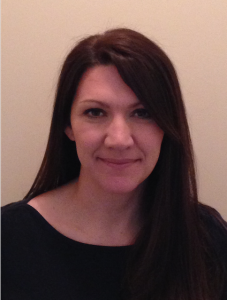In the field of mental health, both clinical and research efforts have focused on the importance of early detection and intervention in psychosis. Research has shown that this strategy might lead to an increased chance of preventing, delaying the onset of, or reducing problems resulting from psychosis. In addition, treatment delays may add to the burden experienced by the individuals and their family, and may have social, educational and occupational consequences.
Reluctance to accept a stigma-laden diagnosis and fear of mental health services may delay help seeking. Families, friends or the individual’s broader social network might be the first to recognize pathological changesbut may lack the ability to correctly identify these changes as symptoms of psychosis. The aim of this study was to gain knowledge about factors that prevent or delay patients with a long duration of psychosis from accessing psychiatric healthcare services at an earlier stage and their personal views on the impact of ongoing informational campaigns on help-seeking behavior.
In this study, eight patients who experienced duration of untreated psychosis lasing for more than six months were interviewed. Participants included four men and four women who were both students and full-time employees, with age ranging from 17 to 44 years. The patients must meet the DSM-IV-TR criteria for first-episode schizophrenia, schizophreniform disorder, schizoaffective disorder, brief psychotic episode, delusional disorder, drug-induced psychosis, affective psychosis with mood incongruent delusions, or psychotic disorder not otherwise specified. The interview format focused on the following main topics: symptom awareness, help-seeking behavior, family and professional involvement, awareness and feedback. Each topic was introduced with an open-ended question and follow-up questions were asked depending on how much the patient elaborated. The interviews were conducted by the first author and lasted 40 minutes on average.
Based on the results, the authors identified five main themes, which include: failure to recognize symptoms of psychosis, difficulties expressing their experiences, concerns about stigma, poor psychosis detection skills among healthcare professionals, and lack of awareness or understanding of available community resources. The five themes identified suggest participants were unable to recognize or understand the severity of their symptoms. Further, although family members or others sometimes recognized the initial symptoms of psychosis development, these symptoms were attributed to reasons other than psychosis. Participants reported that healthcare professionals also had trouble identifying emerging signs of psychosis. Lastly, information about available resources needs to be carefully tailored to relay information to people who do not consider themselves as currently experiencing signs of psychosis.
The majority of participants reported they failed to understand that they needed help at the time of the onset of their psychosis. Instead, they believed or hoped the symptoms and changes they experienced would eventually pass without intervention. Many participants reported that family and friends were the first to notice changes in mood and behavior. Family or friends attributed these changes to difficulty concentrating, “teenage behavior,” or introverted personality rather than the development of a psychiatric illness. In cases where family members suspected the presence of a psychiatric illness, depression was suspected rather than psychosis. Half of the participants reported having no knowledge about psychosis at the time of onset and attributed their symptoms to depression or an anxiety disorder.
An additional obstacle to seeking treatment was uncertainty about how to ask for help. Many participants had trouble explaining their symptoms to healthcare professionals. When they first entered psychiatric treatment, healthcare professionals initially misinterpreted symptoms as depression or anxiety. One participant reported that although she knew where to go to seek help, she did not know how to express herself. Another reason for not seeking help involved concerns that family and others might consequently find out about the mental illness. Many of the participants reported that they deliberately hid their symptoms due to concerns about the reaction of others.
More than half of the participants reported that healthcare professionals had failed to recognize their symptoms as related to psychosis. One of the participants raised concerns about his symptoms with his general practitioner (GP) on several occasions over a period of 1 year before they were correctly identified. Some participants had sought help repeatedly from their GPs or the school nurse during periods when they experienced troubling symptoms. At times, they received treatment from GPs, psychologists, psychiatrists and school nurses for symptoms of anxiety and depression, but healthcare professionals failed to correctly detect and diagnose psychosis. One participant had described the presence of auditory hallucinations upon admission to an adolescent outpatient clinic. Still, he was not offered assessment for psychosis.
The majority of participants said they had seen mental health treatment ads in newspapers or as posters at school. The majority of participants who had seen the ads, however, did not seek help despite awareness of the programs. One participant mentioned that the ads failed to help him understand the true nature or experience of psychosis. Others did not consider themselves as belonging to the target group mainly due to feeling ‘not sick enough.’ The only participant who did seek help reported that he eventually made contact many years after seeing treatment ads.
At first, he did not think he belonged to the target group. As his condition worsened and he experienced all the symptoms mentioned in one of the ads. One participant believed she was actually too sick to get help and felt treatment was not worthwhile. Participants also stated they did not want to unnecessarily bother mental health staff. Others were worried that making contact might lead to a hospital admission.
Although this study utilized a small sample size, it nevertheless represents many of the fears individuals with first-episode psychosis experience. In our communities emphasis should be placed on having more information and education readily available at schools for students and parents. Students, teachers and school nurses should receive information sessions from mental health professionals about signs and symptoms and how to refer students to available treatments. Additionally, information about mental health should start at an earlier point, for example, in junior high school. National newspapers, journal articles, and the Internet may be beneficial channels for communication of available resources in the community.
References:
Bay, N.; Bjornestad, J.; Johannessen, J. O., Larsen, T. K., & Joa, I. (2016). Obstacles to care in first-episode psychosis patients with a long duration of untreated psychosis. Early Intervention in Psychiatry, 10, 71-76.
Jonathan Torres, M.S.
WKPIC Doctoral Intern



